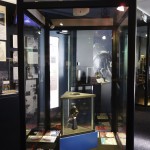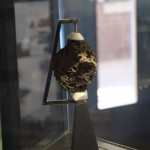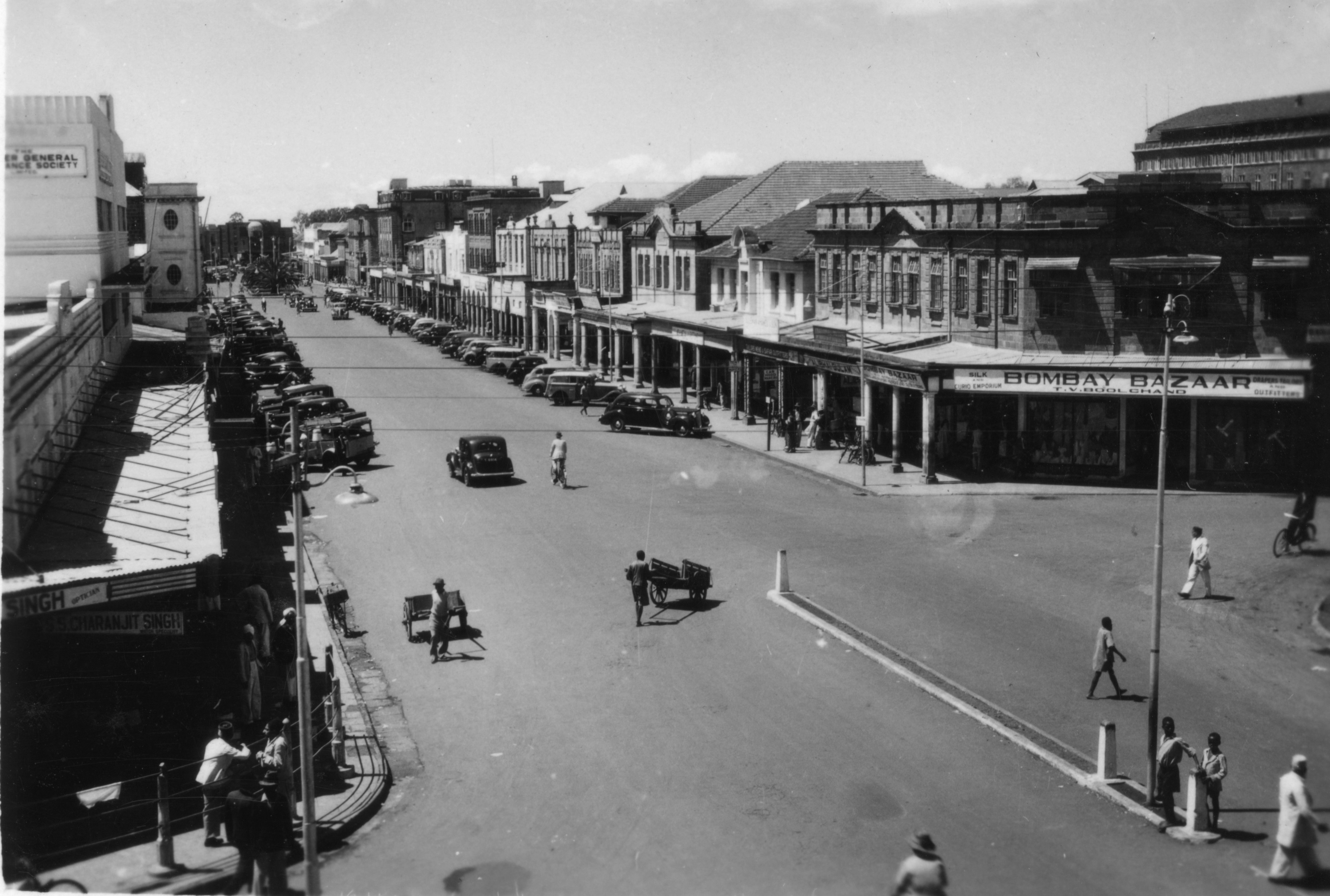This month, well, yesterday, I went to the Deep Space Communication Complex in Tidbinbilla, south-west of Canberra. Relaxing with a coffee in the Moon Rock Café, I had a great view of the largest steerable antenna dish in the southern hemisphere, the DSS43 (Deep Space Station 43), which was staring off into the distance, at this angle:
After coffee, I went into the gallery to see the moon rock:
Beside the rock stood an astronaut that some tourists were touching despite the do-not-touch sign. When they finally left him alone, I took a closer look, without touching, and in his mirrored helmet visor I caught sight of me and my son, who was reading some information on the wall behind me. I snapped the three of us:
And I wondered how he would look in a space suit, sans visor:
While I was dabbling in moon history, the DSS43 began to move:
I went out onto the balcony to watch closely as the dish rotated to look straight up at the sky. I wanted to know more.

Back inside, I read the information about the big dish and tried to understand it. Of course, I couldn’t. But perhaps you can.
Yesterday at Tidbinbilla, the weather was stunningly clear and fine, if wintry. Today it’s raining, the wind is howling and blizzards are threatening in the mountains. We had picked the perfect day for dish-watching.
Thanks Marianne for the prompt to take one trip EVERY month.












